The floor tiles have long become the usual finishing material, but every year it is becoming increasingly difficult to choose the right option - the assortment is constantly expanding. Even in the most modest tile store, you will be offered 15-20 different models that differ in pattern, color, thickness and operational characteristics. What tiles on the floor in the room will look best and how to choose the most high -quality products, we will tell in this article.
Content
The main criteria for choosing tiles for the floor
When choosing a ceramic tile for the floor, it is necessary to build on the floor, first of all, from the room in which you will lay it: the bathroom, the kitchen, the bedroom, the living room, the hallway, etc. These or other characteristics of the tile depend on the operational features of the room. It is also important to understand how the floor tiles are different from any other - it is thicker, stronger and more durable. This is explained by increased loads and mechanical influences on the material, and if you lay a tile intended for wall cladding on the floor, it cracks in the first month.
So, what should you pay attention to when choosing floor tiles for the floor:
- Structure - you can find glossy, matte and embossed tiles on sale, but for the safety of movement it is better to abandon glossy products, even despite their attractiveness. The glossy floor becomes very how much when the water gets on it. If you really liked this option, use it in rooms with normal or low humidity: hallway, living room, bedroom.
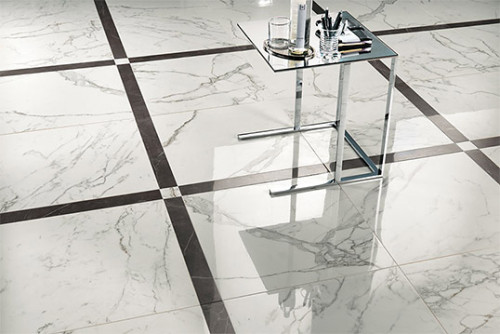
- Dimensions - visual perception of the interior of the room directly depends on the size of the tile. So, if you linen the floor of a small room with large tiles, it will seem very cramped, but if you put a small mosaic on the same floor, this will visually give the room more volume. It is better to use a large tile from 50x50 cm in rooms with a square of 7 m², and for small bathrooms or narrow corridors it is recommended to choose smaller products.
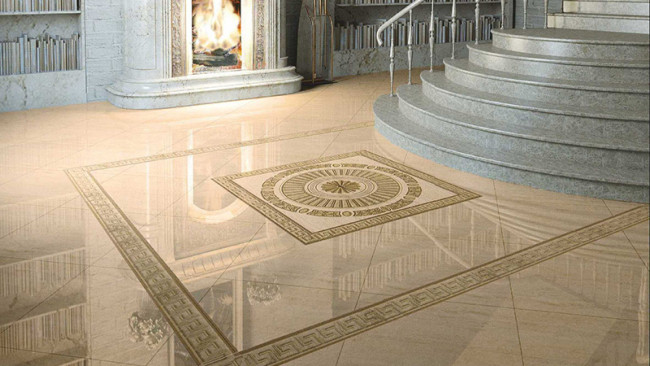
- The coloring - the floor just like walls and ceiling, occupies a rather large area, and therefore is able to significantly affect the formation of the interior of the room. He must be in harmony with the rest of the decoration or contrast with it, emphasizing dignity. White tiles on the floor in the hallway will make it lighter and will visually expand the narrow space. The saturation of the tile shade depends on the brightness of the lighting in the room - the brighter the light, the “juicier” the color. In the classic interior, tiles made of natural stone or imitation of stone look elegant. Such products are different from the usual painted tile, as it has a heterogeneous coloring and unique properties. For example, when getting wet, stone tiles change the tone - it becomes darker. Products of sandstone, shale and marble requires particularly thorough care and bore exploitation, so it is better not to facing the floor in rooms with increased cross -country ability (hall, hallway). Granite tiles are best suited for this.
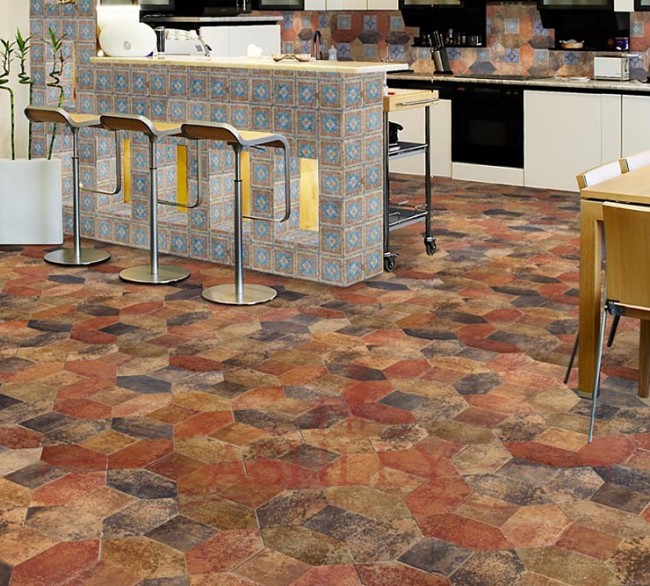
- Material - many believe that tiles are exclusively cold coating, and therefore do not use it in bedrooms and children's rooms. Indeed, stone and ceramic products are cold to the touch and in winter it is better not to walk barefoot on them, but there is a special warm tile for the floor. It is worth making a reservation that the technology of inventing such a tile belongs to the Japanese and it appeared very recently, and therefore has not yet managed to spread everywhere. There are a lot of microscopic air bubbles in its structure, which serve as an air barrier for the cold, without reducing the strength of the coating. In domestic stores with warm tiles, a regular floor tile is usually called, laid on top of a warm floor (water, electric or infrared). But among ordinary products, you can choose colder or warm, for example, stone tiles are much colder than ceramic. Granite and porcelain stone products are best laid in the corridor. Also in the store you can be offered vinyl tiles for the floor. It is warmer than stone or tiled, but the product itself can be called classic tiles. This is a “distant relative” of ordinary linoleum, which changed the composition and way of laying. The material is convenient in that it can be adjusted to any size of the room, cutting with an ordinary stationery knife, it is elastic, warm, but rather short -lived (up to 10 years). There is also a quartzvinyl tile for the floor, which is much harder and durable than its PVC-puretor, since it consists of quartz sand by 60-80%.
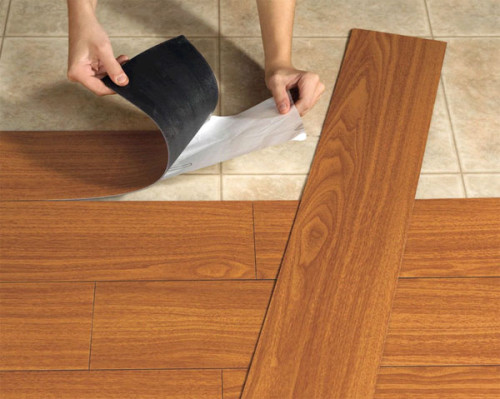
- Marking - on any packaging with tiles there are special signs that will help you choose the right facing material. All the necessary information is encrypted in them. For example, if a palm is drawn on the package, then the tile is designed for walls, not for the floor. But if you see a sign in the form of a footprint, then the tile can be placed on the floor. Snowflake means that the material is suitable for outdoor decoration, and they can be faced with the floor on the terrace or porch.

- Decor - very often tiles are decorated with decorative elements. It can be all kinds of inserts, glossy patterns or narrow embossed strips. Such a coating looks very beautiful and elegant, but only if it corresponds to the interior and quadrature of the room. So, if you work in a small room, it is better not to get carried away with an abundance of small patterns and decorative inserts. Otherwise, you run the risk of getting a tasteful gender with an unreadable pattern.
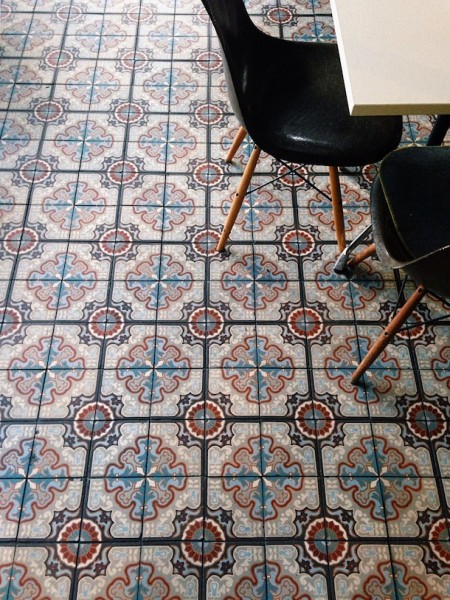
- Manufacturer - manufacturers are domestic and foreign. Contrary to widespread opinion, today there are a lot of quality products of domestic production, which is also cheaper than foreign. However, if you do not have experience in choosing tiles, it is better to trust the trusted countries-suppliers: Turkey, Poland, Italy and Spain (the last two are leaders). Very beautiful, but rather expensive exclusive tiles are made in Morocco.
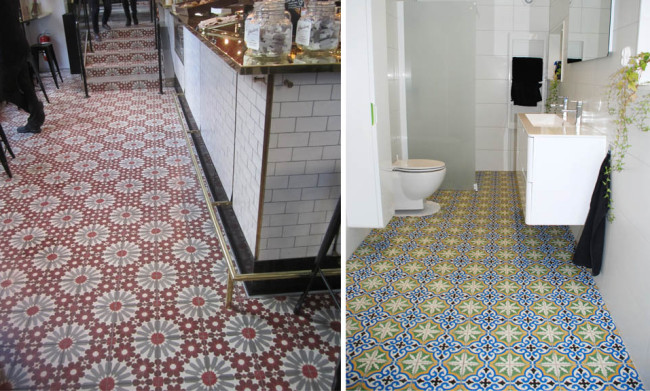
- Varieties - marking on the package contains information about the variety and batch of tiles. The same data should be indicated on the price tag and check. There are 3 varieties of tiles, and the larger the number, the lower the quality of the products. This is reflected in the errors in geometry, deviations in the thickness, uniformity of color, the presence of chips and general operational characteristics. Each variety has its own marking color: 1 variety - red, 2 variety - blue, 3 variety - green. If you plan to clad a large plane of the floor, choose tiles from one batch, since products from different parties may differ in tone, color intensity. And if in a small room it will be imperceptibly, then in a spacious room it will immediately catch your eye.
Useful advice: if you are planning to finish the floors with tiles, choose products in the store while lighting that will be in the room being repaired. So, if it is a kitchen with large windows, where almost always natural lighting, then you need to look at the tile in the store with natural light. And if you need a lining for the floor in a dark corridor, then the tiles can be considered in electric light. In this regard, marketing tricks associated with the art of decoration of windows are very often used - everything, starting from the shade shade, ending with the tone and intensity of lighting, is aimed at demonstrating only profitable qualities of the goods. At the same time, always remember that artificial lighting inevitably distorts colors - do not hesitate to bring the tile to the window and consider better.
How to choose tiles for different rooms
As we have already said, when choosing tiles, we must focus on the specifics of the room in which it will be. Due to immunity to moisture, the tiles are mainly laid in the kitchen and bathroom, so in this chapter we will examine in detail the features of the selection of cladding precisely for them.
Choose tiles for the kitchen
The kitchen is rightfully considered the epicenter of each house, since all family members gather here. Therefore, this room is characterized by high patency, which means the flooring should be resistant to abrasion, durable and safe. The peculiarity of the kitchen is also that they most often carry out cleaning with the participation of household chemicals, and therefore the tile should be able to withstand this.
Covering floors with tiles in the kitchen is a rational and wise solution, but in order for the result to delight you as long as possible, the facing material should be as high quality as possible. Everything happens in the kitchen, for example, you can accidentally shed a hot tomato soup, wine or vinegar, and to remove traces, you will need to use household chemicals. Now imagine that you dropped a metal hammer for the chips on the floor - not every tile will withstand this. That is why it is better for the kitchen to choose the most strong and stable products.
Tiles for the floor in the kitchen should be selected in accordance with the general interior. Usually, the apron is also faced with tiles, and therefore it will be better to buy products from one collection so that they echoes the style and color.
Useful advice: it is better for the kitchen to choose a tile with a protective enameled coating, since it is more resistant to hot spray, fats and other factors. Operational features, namely the need for frequent household chemical cleaning, should be taken into account when choosing grouts for seams. Many, after drying the wear -resistant grout, additionally cover it with transparent varnish.
If you have chosen a luxurious glossy tile for the kitchen, forget about the tank taping with abrasive products and rigid brushes - so you quickly spoil the brilliant coating.
Particular attention should be paid to the impact resistance and strength of kitchen floor tiles. To do this, you need to study the information on the package - there should be a special marking indicating the strength indicators. Since the classification was developed at the American Institute Porcelein Enamel Institute, the PEI abbreviation is facing each number. Tiles under the number I are suitable only for wall cladding, II - for the floor in the bathroom or bedroom (where they often go barefoot or in soft shoes, that is, mechanical effects on the surface are insignificant), III - for the floor everywhere, except for the halls and other rooms with increased cross -country ability, IV - can be laid in any room, V is tiles for floors, designed for high loads (garages, warehouses, etc.). Based on these data, for the kitchen you can use tiles of grades III and IV. As for resistance to chemically active substances, for the kitchen you need to choose products with labeling “A” and “AA”.
Choose the tile for the bathroom
The requirements for flooring in the shower are also high, but still differ from the kitchen finish. Here in the first place is not wear resistance and durability, but security. The tile should be as nonsense as possible, so it is better to abandon products with a flat glossy coating. If you do not imagine the perfect interior without glossy tiles, purchase relief products or cover the floor near the bath or shower with a rubber rug.
There is a special classification according to the surface friction coefficient of floor tiles: less than 0.19 - dangerous, from 0.2 to 0.39 - unsafe, from 0.4 to 0.74 satisfactorily, from 0.75 and above - safe.
Tiles should be combined with plumbing and wall decoration. This does not mean at all that it should be exactly the same color. On the contrary, the floor can contrast with plumbing devices or walls, favorably emphasizing their beauty. For example, the white porcelain of the shell and toilet will look beautiful against the background of red or black tiles.
Choose tiles for other rooms
Practice often shows that the operational difficulties and fragility of floor tiles are not associated with the low quality of the selected products, but with the use of it in the inappropriate room. First of all, this applies to the surface abrasion parameter. In the hope of getting a cheap and convenient floor covering, many put tiles on the floor in the hallway or in the kitchen, not paying attention to the classification of wear resistance. There are 5 classes here, where the first means the most unstable tile to mechanical influences, and the fifth is the most durable and durable. On the first you can only walk barefoot or in soft slippers.
However, many people think that if the tile is flooring, then its a priori can be placed on the floor anywhere. So, for the lobby, hallway and kitchen, tiles of the III and IV class are suitable. At the same time, it is better to choose a matte and not too bright model, since it will have scuffs and scratches on it almost invisible. For public premises, you will need a more durable tile of IV or even V class, but such a strong ceramics cost quite expensive, so many, for rational savings, do not at the expense of quality choose granite or porcelain stoneware.
Choosing a cladding should be very carefully, whether it is a tile or PVC floor tile. When you come to a construction store, set out in detail the seller-consultant all the information regarding the premises where the tiles will lie, as well as your design preferences. To simplify the search as much as possible, gradually narrow the circle of “suspects”: first, mark all the models that are not suitable in the class of wear resistance, slippery, then decide on the size, color, the presence of the pattern and cost.


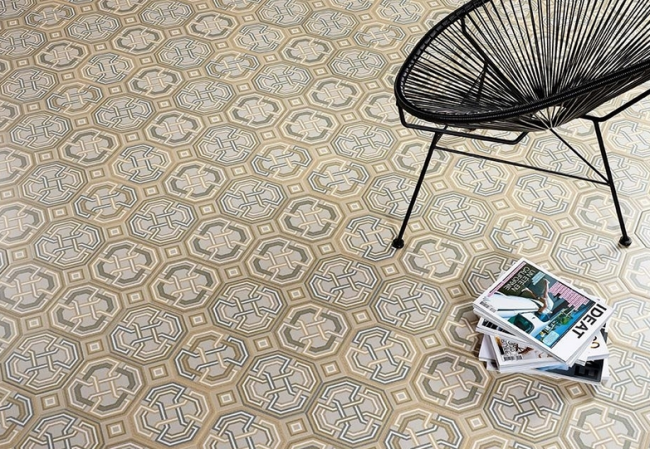
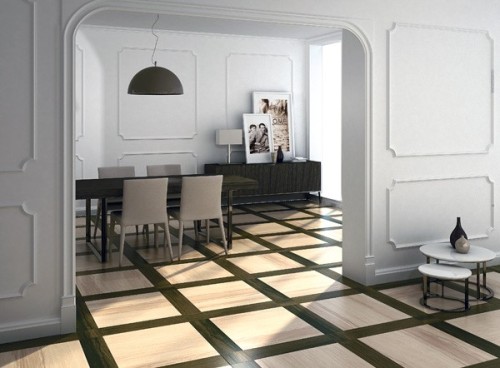
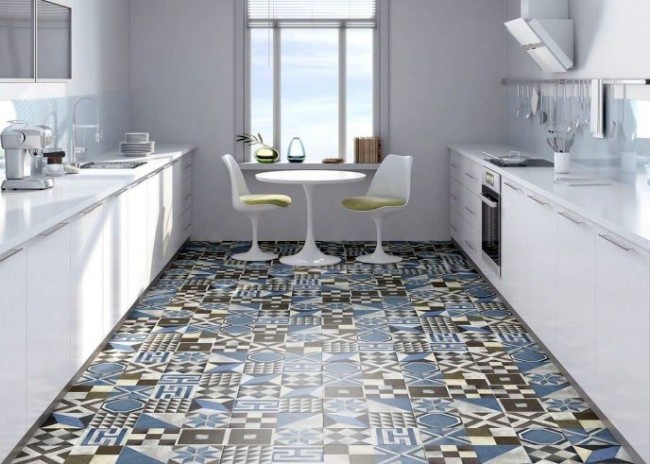
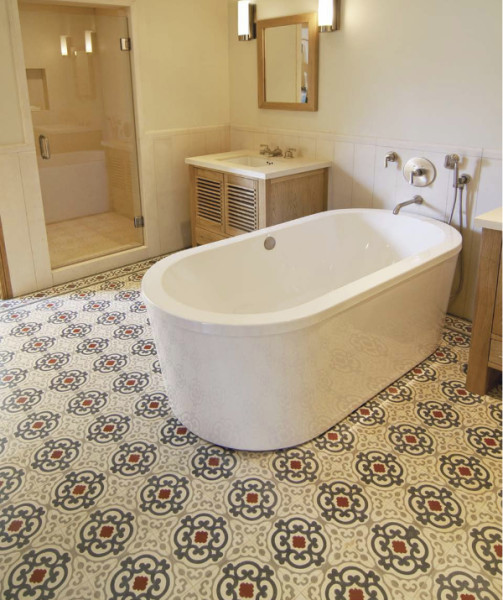
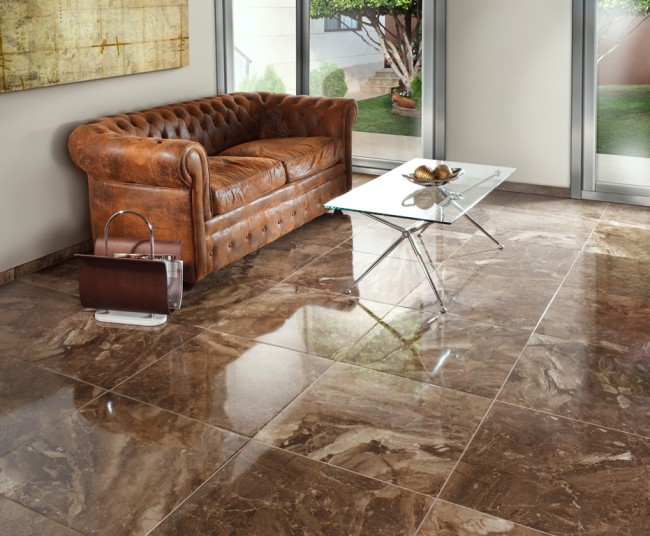
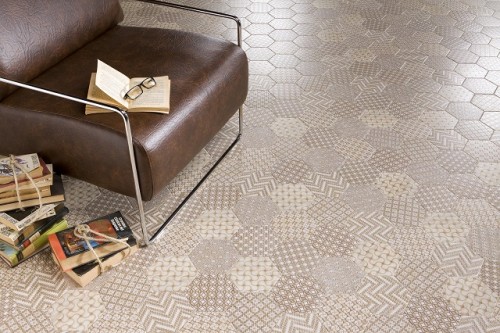
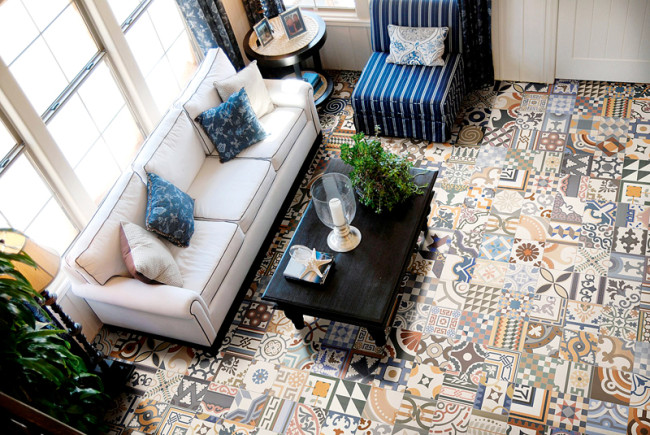
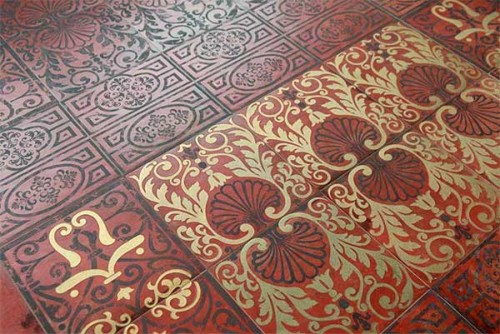










Comments
a couple of years ago, there was no side of metrogils from the same problem, there were no side effects ...
I’m not a fan of peeling at all, it saves from acne of metrogil, it also smoothes it ...
Great article! ...
I take the second course of the Capsules Climafite 911. The tides went very quickly. It became calmer, irritability went away and I sleep well ...
i also noticed - it is worth nervous, everything immediately affects the face. Therefore, I try to avoid conflicts and unpleasant people. Of the creams, I like Miaflow from wrinkles - smoothes not only small wrinkles ...